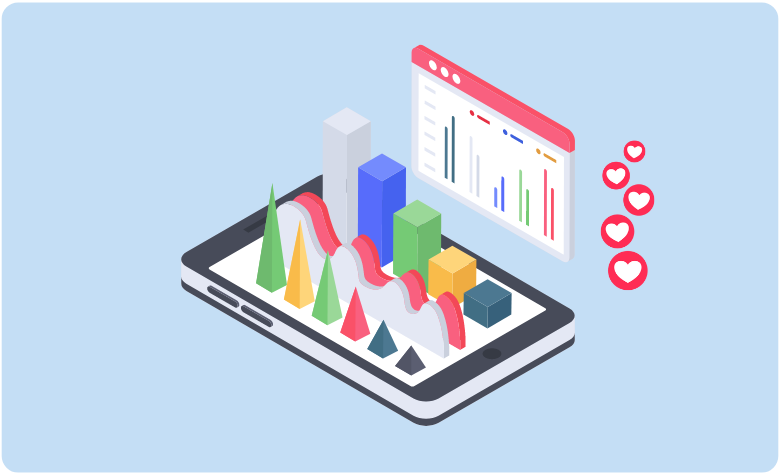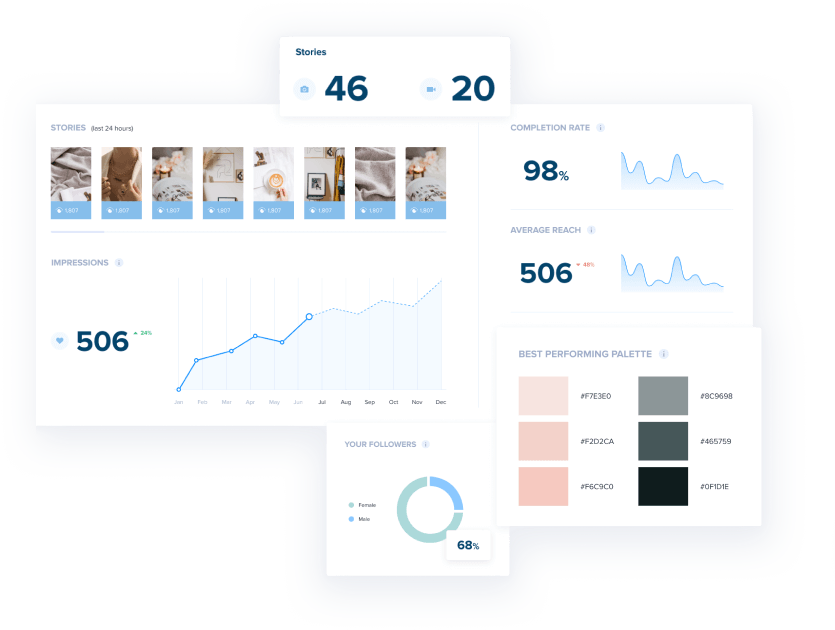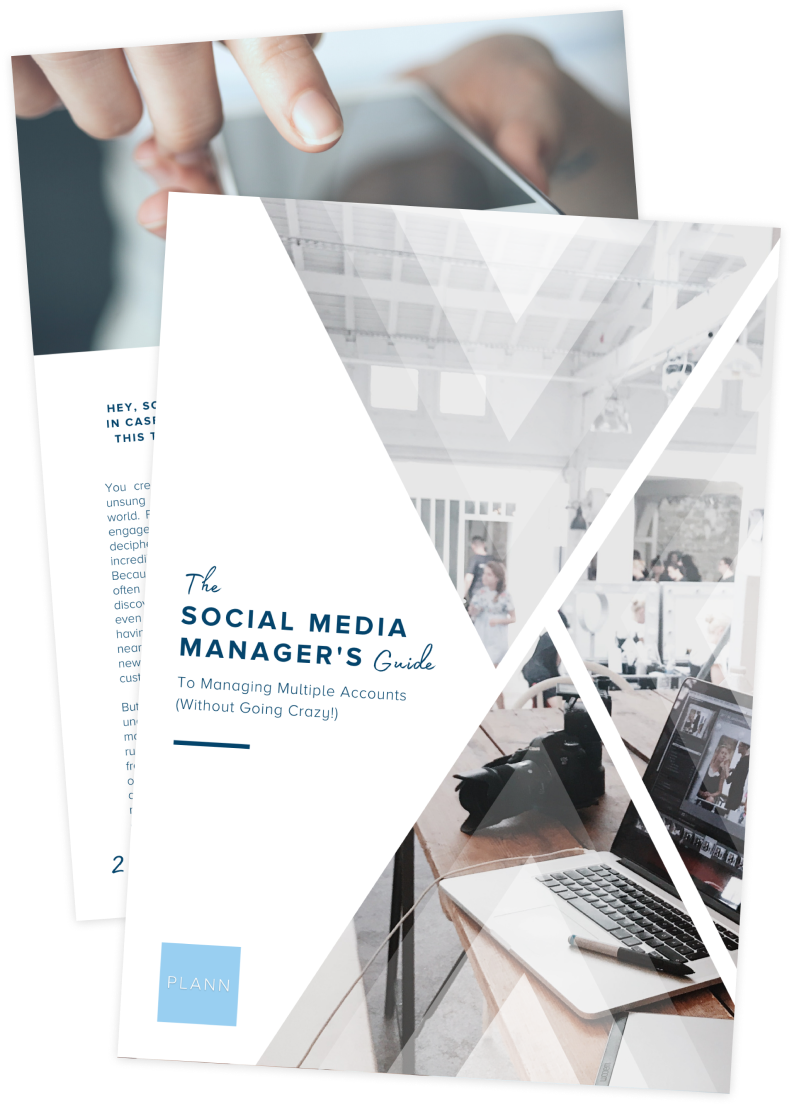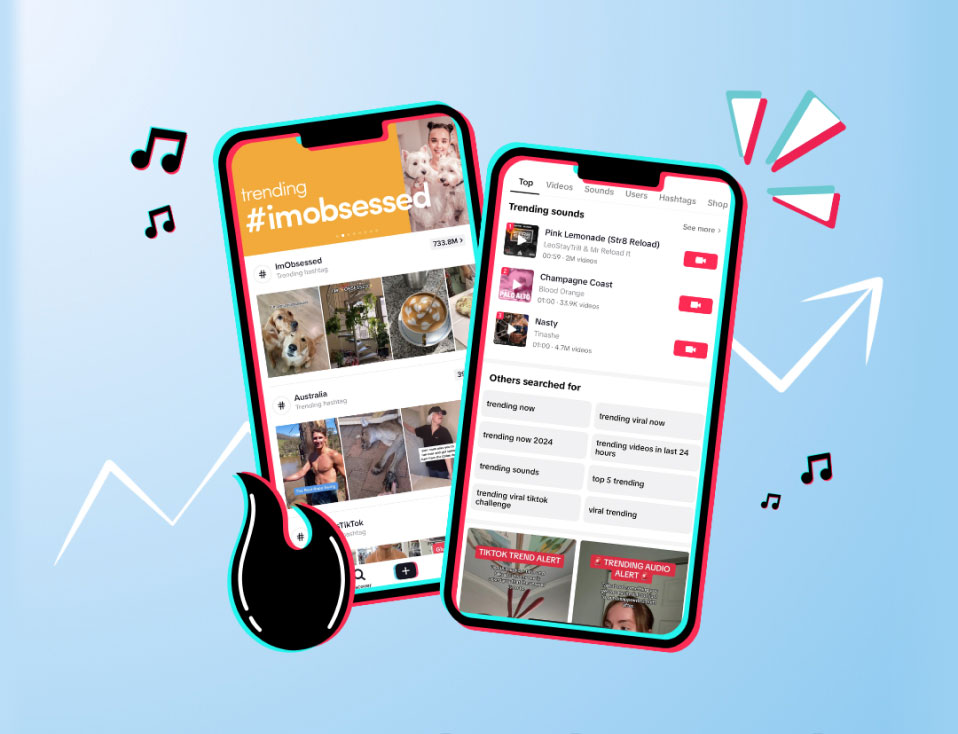You’ve been using social media business and posting consistently for the last few months. But despite jumping on trending Reels, regularly showing up on Instagram Stories and publishing educational carousels, you don’t have a clear content strategy in place. Sound familiar?
If you’re struggling to create social media posts that consistently perform well and reach a wider audience, you might need to rethink your social media content strategy. While this strategy will be influenced by your industry and audience, measuring social media analytics is key.
From seeing what posts are outperforming others to what content types prove most engaging and what audience you’re reaching, these powerful data points can help shape your content strategy to ensure success. Here, we’ll dive into everything you need to know about social media analytics and how you can measure them to then craft the perfect content strategy. Let’s dive in!
Why should you be measuring social media analytics?
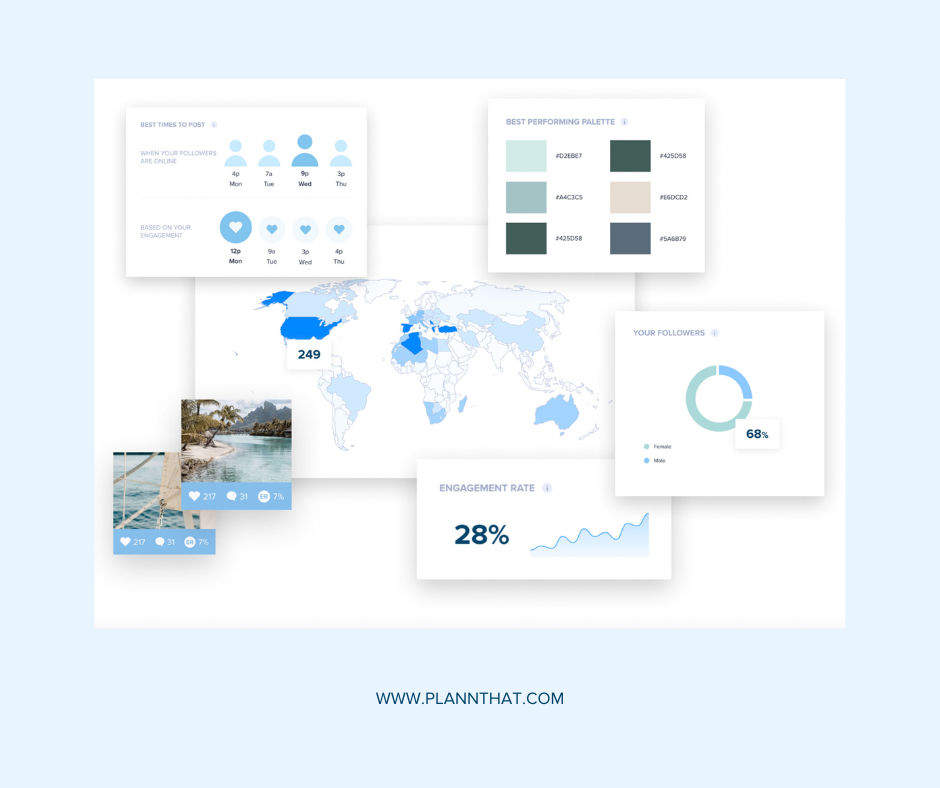 It’s hard to create content that engages audiences, boosts brand visibility, and drives sales if you don’t yet know what success looks like. Thankfully, social media analytics do the hard work for you by revealing what is and isn’t working for your brand on social media.
It’s hard to create content that engages audiences, boosts brand visibility, and drives sales if you don’t yet know what success looks like. Thankfully, social media analytics do the hard work for you by revealing what is and isn’t working for your brand on social media.
Any successful social media strategy begins by first identifying specific goals and objectives for your business. With these in mind, you can then create content that aligns with your goals, your brand’s values, and your audience’s needs. It makes measuring social media analytics incredibly important because it’s this data that will allow you to monitor your performance across social media and make informed decisions as a result.
Still not convinced as to why you should be measuring social media analytics? Consider the following ways analytics can help improve your content strategy:
- You’ll identify your target audience: Successful content resonates with your audience, so it’s important to first understand what they want from your brand. Social media analytics can help you gain insight into your audience’s age, gender, location, interests, buying habits, and preferences and shape the content you produce.
- You’ll see what is and isn’t resonating with your audience: By tracking metrics like engagement rates, click-through rates, likes, and shares, you can determine what types of content best resonate with your audience. This allows you to adjust your content strategy according to posts that are more relevant and tailored to your audience’s needs.
- You can focus your attention on high-performing content formats and topics: Are Reels or Stories better at gaining attention from new audiences? What post topics are most effective in driving organic conversations in your comments? Which posts have helped your brand drive web traffic from social media? By tracking your analytics, you’ll have the answers to these important questions.
- You’ll be able to pivot and refine your social media content strategy to generate better results: Just as social media analytics can identify top-performing content, it can also help you realize those areas where you are underperforming or losing traction. With the available data, you can then see where you need to pivot and come up with content ideas better suited to your audience.
5 Social Media metrics you should be tracking: Content Strategy Edition
Now that you know why social media metrics are important for developing a successful content marketing strategy, it’s time to put these tools to use. Consider these five metrics to help create a winning social media strategy that boosts your brand’s visibility and audience engagement.
1. Accounts Reached: Boost your content’s visibility
Reach refers to the total number of people who see your content. Don’t confuse it with impressions, though, which count the total number of times your content is displayed regardless of whether one person viewed the same posts multiple times.
Ideally, you want every piece of content posted to be widely distributed, with all of your followers seeing every one of your posts. That’s because the higher your reach, the more likely users are to engage with your brand and ultimately take desired actions like visiting your website or making a sale.
By measuring reach, you’ll be able to understand what posts (both topic and format) are most effective in expanding your organic visibility on social media. For example, suppose the Reels you’ve made using trending audio reached a higher number of non-followers compared to your grid posts or Stories. In that case, you know these are high-quality posts that you should focus more on to grow your follower count.
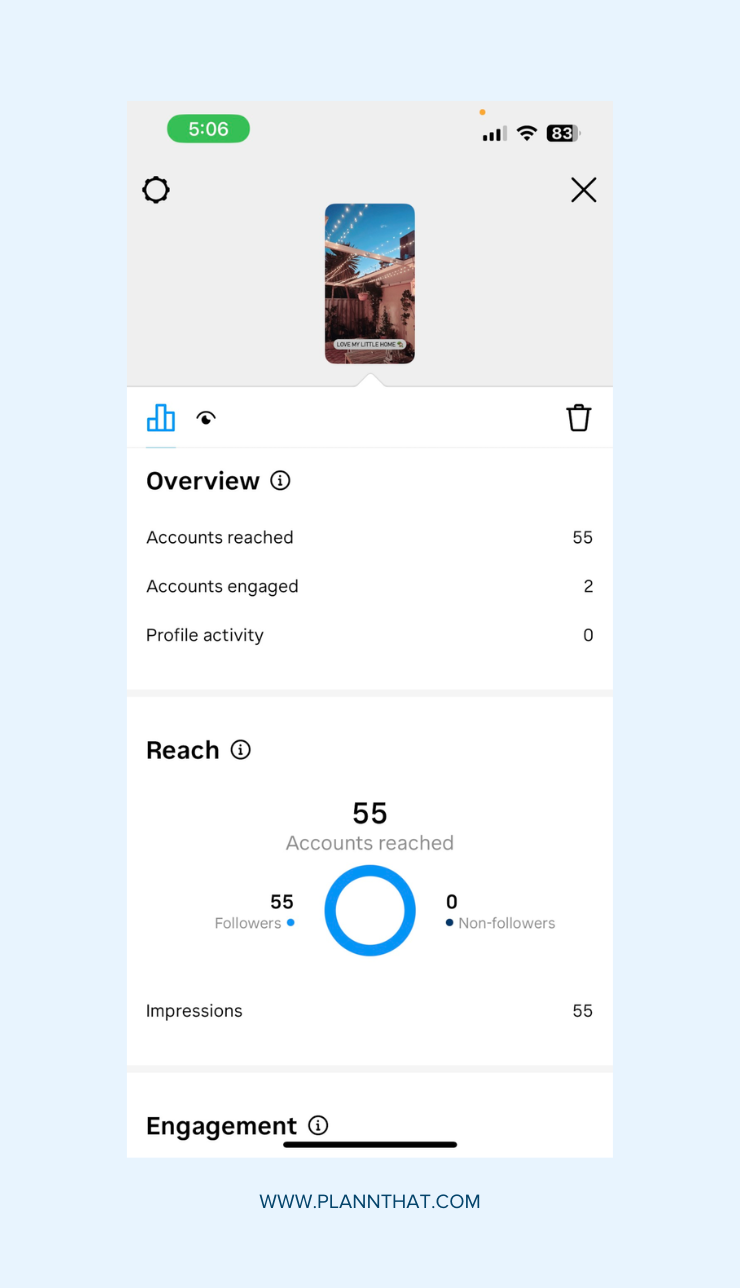 🔥 Hot tip: Make sure to compare your post’s reach based on followers vs. non-followers. This breakdown is helpful in understanding what content is most effective at gaining the attention of accounts that don’t already follow your brand to grow your potential customer base.
🔥 Hot tip: Make sure to compare your post’s reach based on followers vs. non-followers. This breakdown is helpful in understanding what content is most effective at gaining the attention of accounts that don’t already follow your brand to grow your potential customer base.
2. Accounts Engaged: Build meaningful connections
While reach is a powerful brand awareness metric to track, the number of accounts engaged is better placed to show how many users are moving into the consideration phase of the buyer journey.
Accounts engaged reveals how many accounts on a social media platform engaged with your profile or content in some way. This is a broad, account-level metric that monitors the overall performance of your brand’s content during a specific time period.
By tracking the number of accounts engaged, you can assess which post formats (Reels, Stories or Grid posts) are most effective at inspiring action from your audience. From here, you can pivot and refine your content strategy to prioritize the post formats and topics that are most effective at prompting your audience to like, comment, save and share your content.
3. Engagements: Focus on high-value engagements
Engagement refers to the way your audience actively engages with your content. Remember that while boosting engagement is always important, it’s important to place greater emphasis on high-value engagements (such as saves, comments and shares) rather than low-value engagements (such as likes).
All engagement shows that your content resonates with audiences, reflecting a stronger purchase intent, interest in your brand, and trust. The higher your engagements, the more relevant your content is to your audience.
As a post-level metric, tracking specific engagements allows you to tailor your content strategy to align with the actions you want users to take. For example, if you to boost your organic visibility and produce viral, sharable content, filter your posts based on shares and use these insights to refine your content moving forward.
4. Follower Growth: Boost your followers
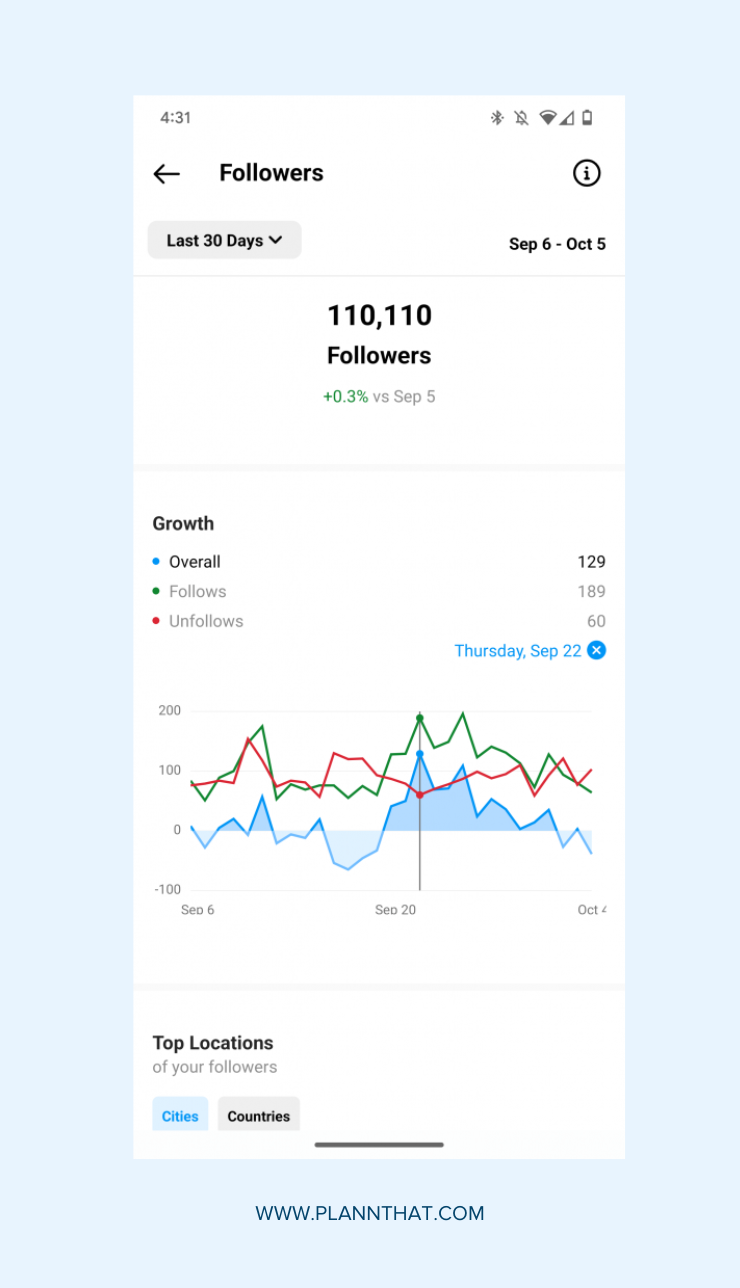 Follow growth rate refers to the speed at which you’re losing or gaining followers. Any business wants to see its following count grow, as this means your content is resonating with audiences, engaging new audiences, and that your social media campaigns are effective.
Follow growth rate refers to the speed at which you’re losing or gaining followers. Any business wants to see its following count grow, as this means your content is resonating with audiences, engaging new audiences, and that your social media campaigns are effective.
Two important numbers to consider when it comes to follower growth are your overall follower count and your net follower growth. Net followers reflect the number of new followers gained minus any you may have lost. This is valuable information, as a consistent increase in new followers means your brand has a wider reach and is attracting the attention of non-followers.
5. Audience Demographics: Know your target audience
In much the same vein as follower growth, audience demographics are important to measure as they help give you an understanding of whether your content is meeting its target audience. Data on audience demographics considers your audience’s age, gender, and location. You might be thinking, surely a big following is beneficial regardless of who those followers are?
Well, not exactly. It’s not so much the number of followers you have as opposed to whether these followers match up to your target market.
If your business is looking to target women aged 20 to 35 in the United States, but demographics reveal a following largely made up of men aged 50 and above in various parts of the world, you need to refocus your attention and create content that can attract a more relevant audience.
Measure your social media analytics like a pro with Plann
As of February 2024, research indicates Facebook is the first social network to surpass one billion registered accounts. More than three billion active users visit Facebook each month, while Instagram boasts two million active users a month, making it the fourth most popular social network. So, the potential for your content to have an impact on a wider audience is significant, you just need a content strategy that works for you and is informed by your social media analytics.
The prospect of tracking social media analytics across platforms might sound daunting, but it doesn’t have to be. Thanks to Plann’s advanced analytics suite, you can ensure your content stands out on social media and finds its target audience. You’ll have access to performance metrics, helpful insight visualizations, and results that are easy to interpret, all in one place.
Go on, and redeem your 7-day free trial of Plann Plus. If you don’t like it, keep using Plann for free!
